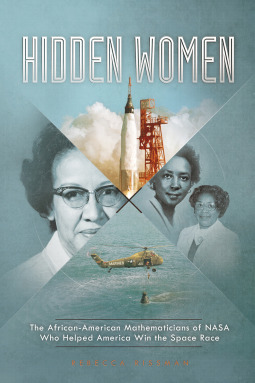
With the box office success of "Hidden Figures" and the demand for more books such as Hidden Human Computers (by Duchess Harris), it is not surprising to see that publishers have stepped up to fulfill the need. Hidden Women tells the story of six African-American women who worked with NASA and its predecessor NACA, to help win the Space Race. Their stories are interwoven with historical events such as Gagarin's first orbit of the Earth, Civil Rights sit-ins, and JFK's dream to have America be the first to land a man on the moon.
Katherine Johnson, Miriam Mann (grandmother of Duchess Harris), Dorothy Vaughan, Mary Jackson, Annie Easley, and Christine Darden are included in this discussion of the role African-American women played in the country's space program. Through the details of their careers, readers learn of the many challenges facing these women. While other workers were given paid leave to attend college, or received funds from NASA to pay their tuition, these ladies had to take unpaid leave and find their own way to finance college degrees. Even if they did have degrees, they were still assigned to pools of workers, rather than being given the same pay and projects that the white men at NASA enjoyed. There were also segregation issues such as not being allowed to live in the dorms on base, having to sit at separate tables in the lunchroom, or use separate restrooms.
Despite all the negative aspects of their jobs, these women still accomplished remarkable things. Some calculated trajectories to safely get astronauts to the moon and back again, others plotted out the safe rendezvous between two spacecraft or made rockets flying with extremely volatile fuel safe to use. Some tested aircraft and spacecraft designs in wind tunnels, or developed new computer code to use with the FORTRAN they had already learned. They all exceeded the expectations of everyone around them in the work place, proving that women and people from diverse racial backgrounds were just as capable as the white men on the job.
A final chapter visits with three women who are currently working in the space industry and contrasts their experiences with those of the early pioneers like Johnson and Easley. Back matter includes a timeline, glossary, bibliography, source notes, and index. There is a list of books for those who wish to read more about the topic, and also critical thinking questions that would be useful for a book group or class book study. The archival photos throughout the book show all the featured women, as well as several of the astronauts and rockets mentioned.
Recommended for middle grades and up.
No comments:
Post a Comment